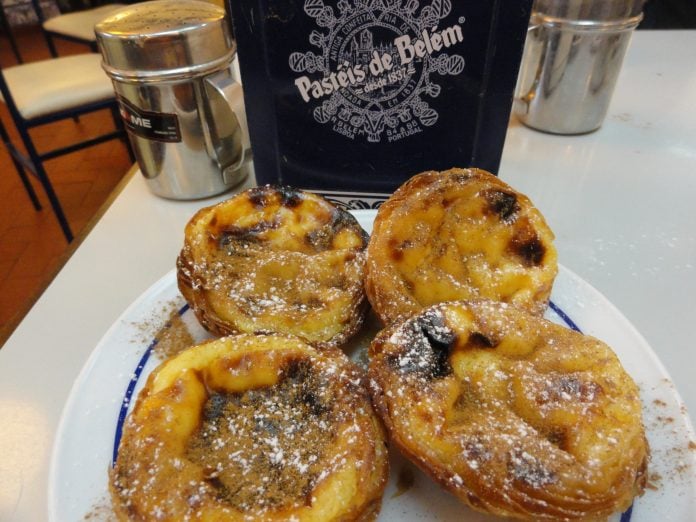The Pastel de Belem is the original Pastel de Nata, using the original monk recipe. Founded in 1837, Pasteis de Belem welcomes hundreds of thousands of visitors annually, a short walk from the Jeronimos Monastery, selling over 20,000 tarts daily. The Pastel de Belem was announced in 2011 as one of Portugal’s Seven Wonders of Gastronomy. Let’s take a look at the history of the Pastel de Belem cafe and what you can expect when visiting.
History
The history of Pasteis de Belem cafe starts in the Jerónimos Monastery.
Initially produced in Belem, Lisbon, the origin of the pastel de nata is sacred and spiritual, known as the pastel de Belem. This pastry, originating prior to the 18th century, has its roots in the hands of Catholic monks residing within the Jeronimos Monastery, which stands today as a UNESCO World Heritage Site.
Within convent walls, eggs were in abundance, often used for laundry starching for Portuguese friars and nuns. Leftover eggs naturally led to the creation of pastries. Thus, with eggs as a principal ingredient, the Portuguese custard tart was created in the monastery.
Following the Liberal Revolution of 1820, religious influence in Portuguese society decreased, prompting the closure of many convents and monasteries. The necessity of survival drove monks to offer Portuguese custard tarts for sale in a sugar refinery.
In 1834, the Jeronimos Monastery closed its doors, leading the monks to sell the coveted pastel de nata recipe to the sugar refinery. Just three years later, the owners of the sugar refinery launched the Fabrica de Pasteis de Belem, just next door.
While it first opened as a factory, today, it features a shop with take-out service and a cafe to sit down and enjoy the specialty. They sell over 20,000 tarts every day with the secret monk recipe.
What To Expect
Expect a long line to go in the cafe. There’s a line to sit down at the cafe and enjoy a pastel de nata and there’s also a line just for takeaway. Takeaway tends to be faster, but in the summer, you could still need to wait a while.
Along with the traditional pastel de Belem, visitors can also try out other specialties such as the English cake, Belem marmalade, king cake, and more. The Pastel de Belem is usually enjoyed with an espresso.


